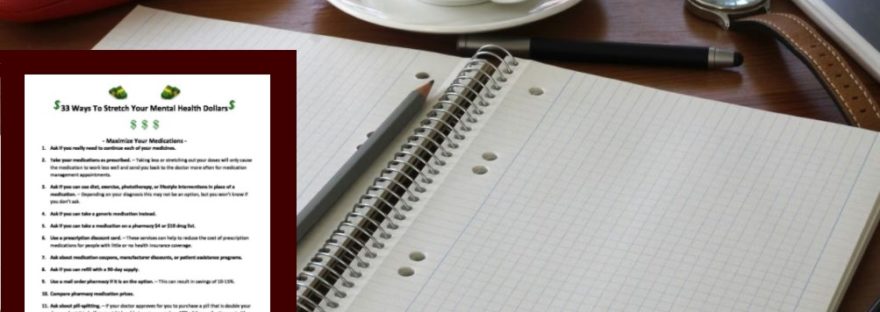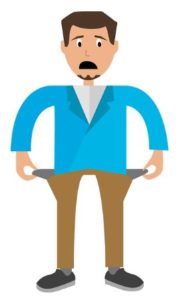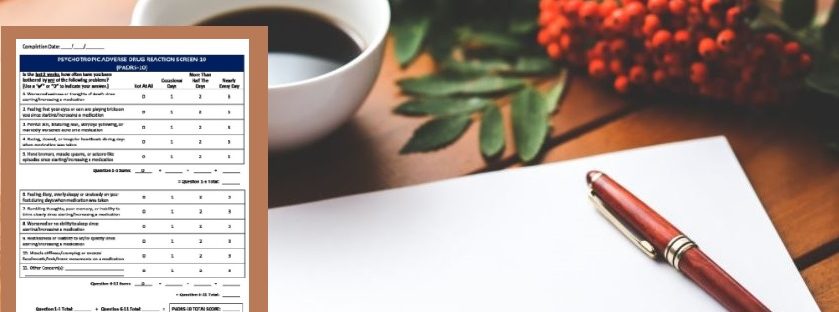
Image from ccPixs.com
The Problem: Mental Health Care Can Be Expensive
One of the most daunting aspects people face when attempting to manage their mental health is managing the financial cost of the care. Between the bills associated with counseling, prescriptions, and time away from work, the mere thought of beginning a therapy plan is often enough to cause most people to want to hide their wallets.
In the interest of making the process a bit less expensive and terrifying for you (our reader), we’ve compiled a list of ways to approach starting a mental health treatment plan while also saving on costs.
Options For Solutions
1. Start Sooner Rather Than Later – It can be sooo tempting to think that you’ll save money by putting off looking into care, but if you condition is worsening while you’re avoiding seeking help, it will be all the harder to improve when you get around to beginning care. Save yourself time and money by acknowledging the reality of your situation.
This is not a matter of mind over matter, so don’t waste time blaming yourself for needing a bit of support. If you wouldn’t scold an asthmatic for not being able to force themselves to breath, you can afford to cut your brain a bit of emotional slack. Begin researching your options for getting the care you need, and then be smart about how you get the help. Which brings us to…
2. Pick The Right Kind Of Mental Health Professional – One of the best ways to save time your mental health expenses is to select the most appropriate kind of professional from the beginning of your care. It saves you the time and expense of paying to switch professionals after being screened and recommended to receive a different type of support.
In most cases, the decision will focus on choosing between starting with a professional who provides treatment by counseling versus medicines. Although it’s very common for people to receive support with both therapy and medications (frequently at the same time), more and more mental health professionals are tending to specialize in one or the other.
So if deep down in your heart of hearts, you know that you need a medicine to stop the slide and get your mental health back on track. Start with a professional who writes prescriptions, because doing anything else will probably cause you to spend more money without making much progress in the long run. The same goes for counseling. If you’re desperate for a safe space to vent and process internal struggles, start with psychotherapy. Even if you are eventually recommended to start a medication with another treatment professional, you’ll be more able to advocate for yourself and potentially need less medicine support because of your improved coping skills.
One last thing in this area, people often ask if they need to see a psychiatrist or a psychologist for provision of their respective medicine management or therapy. The truth of the matter is that there are now many professionals who are licensed to provide medicine prescriptions without being psychiatrists or provide therapy without being psychologists. Without getting into the politics associated with this area, patients are probably best served by going with two simple rules of thumb.
- Look for a professional who is well-versed in supporting people with your kind of concerns. You may be able to tell if this is case by reviewing the professional’s profile information. If nothing in their descriptions or reviews sounds like your situation, you may need to look elsewhere.
- If you have complicated care needs, seek a more advanced professional. As explained earlier, mental health professionals have different levels of experience. The level of skill required for management of inattention with mild depression is simply not the same as the skill set required for management of intense anxiety in the presence of a thyroid or seizure disorder. If you know your situation is more complex, pay for the support of a more skilled professional. Their abilities will allow you to achieve more rapid results – thereby saving you the frustration and expense of struggling for years only to find out that you could have received more effective treatment.
3. Use Your Resources – If you have health insurance that covers mental health appointments, you may use their website or customer support line to request the name of mental health professionals near you. At the same time, you’ll probably also use search engine reviews to identify a few options of your own. If you have supportive friends or family, they may be able to provide references to people they’ve found helpful. Finally, don’t forget to ask your primary doctor’s office if they have good mental health team members to recommend. It’s very common for generalists and pediatricians to refer to local mental health professionals, so you’re likely to receive a few glowing reviews.
Also, by using the network of people and resources at your disposal, you’ll save time and avoid the expense of having to transfer from a professional who turns out not to be the best fit for your needs.
To help our local readers with this process, we’ve included a list of some of the therapists that Walker Clarity Centre patients have positively reviewed. It isn’t all inclusive, but it gives an idea of the kind of quality professional you should be seeking.
4. Screen While You Make Contact – Once you have your list of names, do some digging. Thoroughly read the reviews for your favorite candidates and visit their websites. Once you think you’ve found a potential fit, contact the professional. If you plan to use your insurance, find out if they are in network. Do they see patients during days/times that you are able to make an appointment? Pay attention to the interaction between yourself and their staff. Is it a good fit? If so, congratulations! Schedule an appointment to finish screening with the professional in person. If not, congratulations on saving yourself time and money by avoiding a poor fit! Move to the next in your list of names, and start screening the next option.
If you take this approach to beginning your mental health journey, you are much more likely to save time, money, and frustration. You’ll seek care before your symptoms progress to the pont of being overwhelming. You’ll determine the best kind of mental health professional to see first. You’ll use your support network to identify the best candidates to provide your care, and you’ll properly screen through your list of names to find the professional and office team that best approach your preferences for mental health care support.





 With its opportunities to share time with family and friends, take much needed breaks from the hurried pace of work and school, and pause to regroup before starting a new calendar year, the holiday season can truly be a most wonderful time of year. Unfortunately, the glittering portrayal of this season seems to regularly fall short of what most of us experience. The difference between heightened expectations and the cold reality of the year’s ending can easily leave a person feeling stressed, depressed, overwhelmed, and/or irritated. Here are a few suggestions on how to navigate the season, while extending emotional grace to yourself and others.
With its opportunities to share time with family and friends, take much needed breaks from the hurried pace of work and school, and pause to regroup before starting a new calendar year, the holiday season can truly be a most wonderful time of year. Unfortunately, the glittering portrayal of this season seems to regularly fall short of what most of us experience. The difference between heightened expectations and the cold reality of the year’s ending can easily leave a person feeling stressed, depressed, overwhelmed, and/or irritated. Here are a few suggestions on how to navigate the season, while extending emotional grace to yourself and others.
 Most of us know what it’s like to have more month than money. It can be painfully frustrating to stare at the phone or computer screen while willing those dollars and cents to multiply in the account.
Most of us know what it’s like to have more month than money. It can be painfully frustrating to stare at the phone or computer screen while willing those dollars and cents to multiply in the account.
 With 1 in 5 American adults currently diagnosed with a mental illness
With 1 in 5 American adults currently diagnosed with a mental illness



